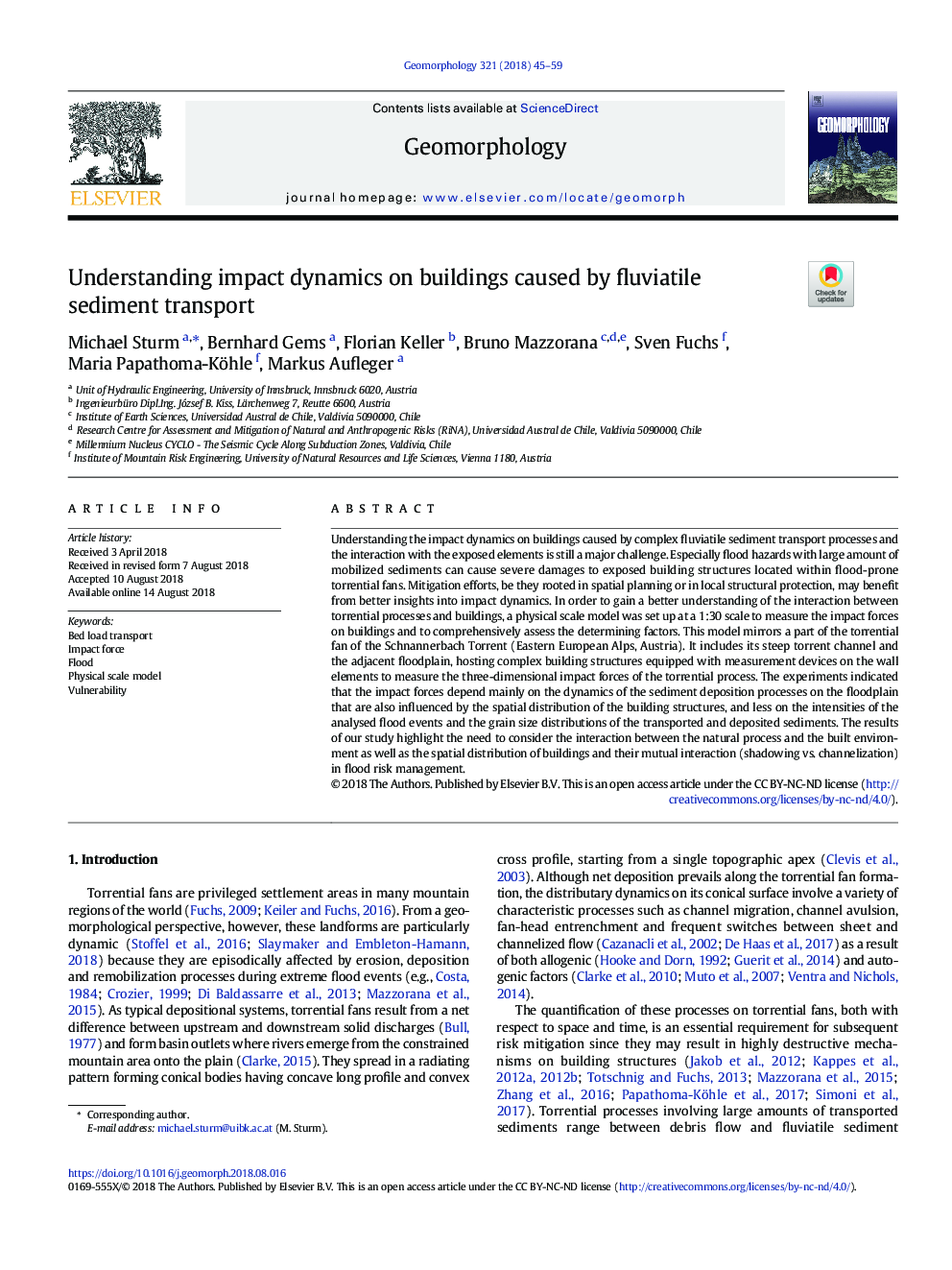| Article ID | Journal | Published Year | Pages | File Type |
|---|---|---|---|---|
| 8946347 | Geomorphology | 2018 | 15 Pages |
Abstract
Understanding the impact dynamics on buildings caused by complex fluviatile sediment transport processes and the interaction with the exposed elements is still a major challenge. Especially flood hazards with large amount of mobilized sediments can cause severe damages to exposed building structures located within flood-prone torrential fans. Mitigation efforts, be they rooted in spatial planning or in local structural protection, may benefit from better insights into impact dynamics. In order to gain a better understanding of the interaction between torrential processes and buildings, a physical scale model was set up at a 1:30 scale to measure the impact forces on buildings and to comprehensively assess the determining factors. This model mirrors a part of the torrential fan of the Schnannerbach Torrent (Eastern European Alps, Austria). It includes its steep torrent channel and the adjacent floodplain, hosting complex building structures equipped with measurement devices on the wall elements to measure the three-dimensional impact forces of the torrential process. The experiments indicated that the impact forces depend mainly on the dynamics of the sediment deposition processes on the floodplain that are also influenced by the spatial distribution of the building structures, and less on the intensities of the analysed flood events and the grain size distributions of the transported and deposited sediments. The results of our study highlight the need to consider the interaction between the natural process and the built environment as well as the spatial distribution of buildings and their mutual interaction (shadowing vs. channelization) in flood risk management.
Related Topics
Physical Sciences and Engineering
Earth and Planetary Sciences
Earth-Surface Processes
Authors
Michael Sturm, Bernhard Gems, Florian Keller, Bruno Mazzorana, Sven Fuchs, Maria Papathoma-Köhle, Markus Aufleger,
